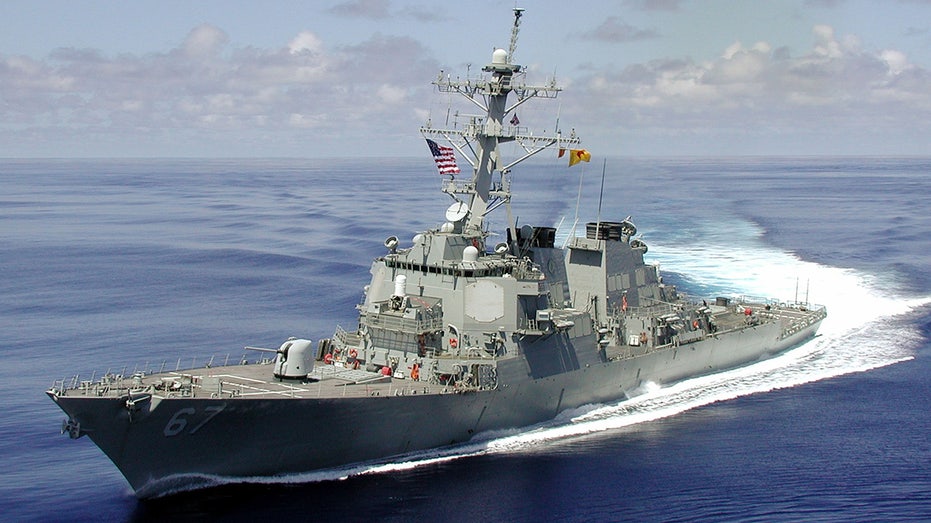Third Navy Destroyer Deploys to Southern Waters to Bolster Maritime Border Security
U.S. Navy deploys third destroyer near Mexico to bolster border security and fight drug trafficking.

The U.S. Navy announced on Friday the deployment of a third destroyer, the USS Cole, to waters near the southern border as part of ongoing efforts to bolster patrols along the U.S.-Mexico boundary. This strategic move highlights the intensification of federal operations aimed at curbing illegal immigration and drug smuggling in the region.
The USS Cole, an Arleigh Burke-class guided-missile destroyer, departed its homeport in Mayport, Florida, and will soon join ongoing maritime security missions in support of border enforcement. The deployment comes on the heels of similar missions by the USS Spurance, based out of San Diego, and the USS Gravely, which launched from Norfolk, Virginia earlier this year.
Both the Spurance and Gravely are currently engaged in patrols on either side of Mexico, working in tandem with Coast Guard Law Enforcement Detachment (LEDET) teams onboard. These joint operations represent an unprecedented collaboration between the Navy and Coast Guard, designed to intercept illegal drug trafficking and enhance awareness of suspicious maritime activity along the border region.
In its latest movement, the USS Cole will relieve the USS Gravely and undertake similar patrol and interdiction operations as part of U.S. Northern Command's (NORTHCOM) intensified border security mission. According to Navy officials, this rotational deployment is essential to maintain a persistent presence and sustain pressure on transnational criminal organizations operating in the area.
Since arriving in the Gulf of America in March, the USS Gravely has enjoyed support from P-8 surveillance aircraft out of Naval Air Station Jacksonville, Florida. This aerial assistance has proven critical, allowing improved detection and identification of illicit activities, and has helped the Coast Guard track and interdict suspicious vessels far from U.S. shores.
Cmdr. Gregory Piorun, commanding officer of the USS Gravely, praised the ship and its crew for their efforts, declaring, “We will continue to stand strong, protect vital waters, and ensure that justice prevails. True to our motto, we remain always, ‘First to Conquer.’”
One significant result of these expanded operations was realized on May 25, when the Gravely’s Visit, Board, Search and Seizure (VBSS) team, backed by their LEDET partners, seized approximately 860 pounds of cocaine from a vessel intercepted in the Caribbean Sea. The 19 bales of cocaine discovered during the boarding were estimated to have a street value of over $13.6 million—a major blow to drug trafficking networks attempting to exploit maritime routes into the United States.
Capt. Raymond Jackson of the Coast Guard Tactical Law Enforcement Team South emphasized the broader significance of the mission: “By uniting Coast Guard law enforcement expertise with Navy reach and surveillance, we’re enhancing deterrence, increasing domain awareness and reinforcing our commitment to protecting the homeland.” Officials say these integrated operations exemplify the current administration’s focus on robust homeland defense and demonstrate a strengthened approach to maritime border security.




